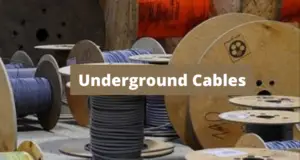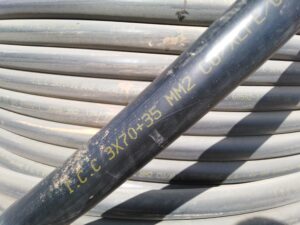Cable trays are essential components of electrical power and data communication systems that provide safe and reliable routing, support, and protection of cables and wires.
However, cable trays must comply with specific codes and standards to ensure proper design, installation, and maintenance.
This article will provide an in-depth overview of the applicable codes and standards for cable tray systems.
Table of Contents
What are Cable Trays?
Cable trays are structural systems made of metal or non-metal materials that support and protect cables and wires while maintaining their separation and organization.
Cable trays come in various shapes and sizes, including ladder-type, solid-bottom, wire mesh, and perforated types, and can be used in indoor and outdoor environments.
Why is Compliance with Codes and Standards Important?
Compliance with codes and standards is essential for ensuring the safety and reliability of cable tray systems.
Codes and standards provide guidelines for the proper design, installation, and maintenance of cable trays, ensuring that they meet minimum safety requirements and performance standards.
Compliance with codes and standards can also prevent costly downtime, accidents, and liability issues.
Applicable Codes and Standards for Cable Tray Systems
Several codes and standards apply to cable tray systems, including:
National Electrical Code (NEC)
The NEC is the primary code that governs the installation of electrical systems, including cable trays.
The NEC provides requirements for the minimum clearance between the cable tray and other electrical equipment, grounding, bonding, and support, among other things.
The NEC is updated every three years to reflect new technologies and safety standards.
Underwriters Laboratories (UL)
UL is a third-party certification organization that tests and certifies cable trays for safety and compliance with industry standards.
UL standards cover various aspects of cable tray design, including construction, materials, and fire resistance.
Canadian Electrical Code (CEC)
The CEC is the Canadian counterpart to the NEC and provides requirements for the design, installation, and maintenance of electrical systems in Canada, including cable trays.
The CEC covers cable tray grounding, bonding, support, and installation clearances, among other things.
International Electrotechnical Commission (IEC)
The IEC is a global organization that develops and publishes international standards for electrical systems, including cable trays.
IEC standards cover various aspects of cable tray design, including construction, materials, and fire resistance.
Cable Tray Design Standards
Several design standards apply to cable trays, including:
National Electrical Manufacturers Association (NEMA)
NEMA is a trade organization that develops and publishes standards for electrical products, including cable trays.
NEMA standards cover various aspects of cable tray design, including materials, construction, and loading capacity.
American Society of Mechanical Engineers (ASME)
ASME is a professional organization that develops and publishes standards for mechanical engineering products, including cable trays.
ASME standards cover various aspects of cable tray design, including materials, construction, and performance.
International Organization for Standardization (ISO)
ISO is a global organization that develops and publishes international standards for various products, including cable trays.
ISO standards cover various aspects of cable tray design, including materials, construction, and performance.
Cable Tray Installation Standards
Several installation standards apply to cable trays, including:
Electrical Contractors’ Association of Ontario (ECAO)
The ECAO is a professional organization that develops and publishes standards for electrical contractors, including cable tray installation.
ECAO standards cover various aspects of cable tray installation, including support, bonding, and grounding.
National Fire Protection Association (NFPA)
The NFPA is a nonprofit organization that develops and publishes standards for fire protection and prevention, including cable tray installation.
NFPA standards cover various aspects of cable tray installation, including clearance, spacing, and fire resistance.
Cable Tray Maintenance Standards
Several maintenance standards apply to cable trays, including:
Institute of Electrical and Electronics Engineers (IEEE)
The IEEE is a professional organization that develops and publishes standards for electrical and electronic systems, including cable tray maintenance.
IEEE standards cover various aspects of cable tray maintenance, including cleaning, inspection, and repair.
Read my comprehensive article about cable tray cleaning for more in-depth information.
National Association of Corrosion Engineers (NACE)
NACE is a professional organization that develops and publishes standards for corrosion prevention and control, including cable tray maintenance.
NACE standards cover various aspects of cable tray maintenance, including corrosion prevention, inspection, and repair.
Comparison Table of Applicable Codes and Standards
To make it easier to compare the various codes and standards, we have prepared the following table:
| Code/Standard | Applicability | Scope |
|---|---|---|
| NEC | USA | Installation of electrical systems |
| UL | Global | Third-party certification for safety and compliance |
| CEC | Canada | Installation of electrical systems |
| IEC | Global | International standards for electrical systems |
| NEMA | USA | Design of electrical products |
| ASME | USA | Design of mechanical engineering products |
| ISO | Global | International standards for various products |
| ECAO | Canada | Standards for electrical contractors |
| NFPA | USA | Standards for fire protection and prevention |
| IEEE | Global | Standards for electrical and electronic systems |
| NACE | Global | Standards for corrosion prevention and control |
Conclusion
Cable trays are critical components of electrical power and data communication systems, and compliance with codes and standards is crucial for ensuring their safety and reliability.
The applicable codes and standards for cable tray design, installation, and maintenance include the NEC, UL, CEC, IEC, NEMA, ASME, ISO, ECAO, NFPA, IEEE, and NACE.
Each code and standard covers different aspects of cable tray systems, including design, installation, and maintenance.
Compliance with codes and standards can prevent accidents, ensure proper performance, and avoid costly downtime and liability issues.
the standards and organizations mentioned in the article:
- National Electrical Code (NEC): https://www.nfpa.org/codes-and-standards/all-codes-and-standards/list-of-codes-and-standards/detail?code=70
- Underwriters Laboratories (UL): https://www.ul.com/
- Canadian Electrical Code (CEC): https://www.csagroup.org/store/product/2702521/
- International Electrotechnical Commission (IEC): https://www.iec.ch/
- National Electrical Manufacturers Association (NEMA): https://www.nema.org/
- American Society of Mechanical Engineers (ASME): https://www.asme.org/
- International Organization for Standardization (ISO): https://www.iso.org/home.html
- Electrical Contractors Association of Ontario (ECAO): https://www.ecao.org/
- National Fire Protection Association (NFPA): https://www.nfpa.org/
- Institute of Electrical and Electronics Engineers (IEEE): https://www.ieee.org/
- National Association of Corrosion Engineers (NACE): https://www.nace.org/
Don’t Leave Empty-Handed!
Install my Free Android App on Google Play:
Electrical Cables Most Common Tables “Cables Tables”
And, my Electrical Calculations App “Fast Electrical Calculator”
Discover more great content by subscribing to My channel
Looking to stay ahead of the game in the world of electrical engineering? Subscribe to my YouTube channel and gain access to exclusive content you won’t find anywhere else!
The staff I recommend
(Amazon Affiliate Links to products I believe are high quality):
- Economy 120 Volt/60Hz AC Power Source – Step-Down Voltage & Frequency Converters 1800W
- UNI-T Digital Multimeter Tester UT139C
- 50-Amp Extension Cord for RV “100ft”
- Voltage Stabilizer 110/220v
- Hair Dryer “best selling“
- TOSHIBA EM131A5C-BS Countertop Microwave Ovens
Disclaimer: This contains affiliate links to Amazon products. I may earn a commission for purchases made through these links.


